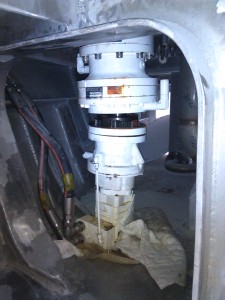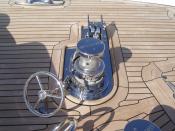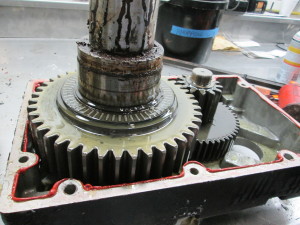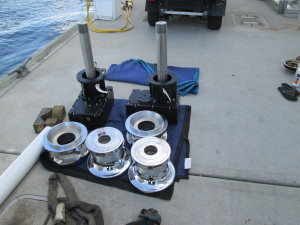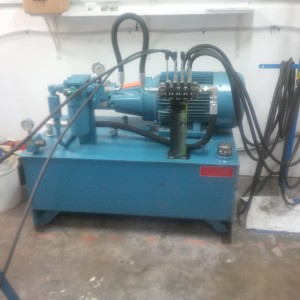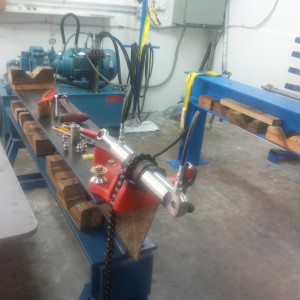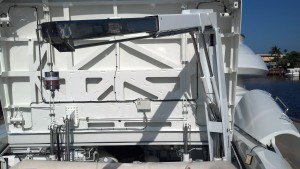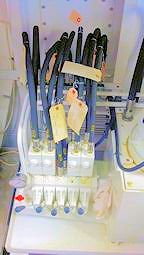
Hydraulic hoses tagged and marked for replacement.
Frequently a vessel will decide it is time to change hydraulic hoses. This is usually due to age, cracking, leaking or just overall feeling that a hydraulic hose might fail. Some systems can have dozens of hydraulic hoses. It might seem pretty straight forward to pull off a hose, get one made and replace it.
Simple enough for the crew or basic mechanic – right? Sometimes – maybe.
We recently changed a large number of hoses on a 131’ Feadship hydraulic steering, crane and passerelle system. The change out was fairly straight forward taking time to plug and mark everything and maintain a clean work area. However, once the system is restarted, what do you do when it is not working properly? Now the simple “hydraulic hose changer” just got into a much deeper job.
This was the case in our job. Suddenly the passerelle would not operate. Our hose changers are highly qualified hydraulics experts and within a few hours the problem with the passerelle was resolve. As with many passerelle systems the problem was a loose sensor giving the system incorrect data.
Make sure you bring in qualified companies to do even the most basic work. It will save you time, money and headaches in the long run.





